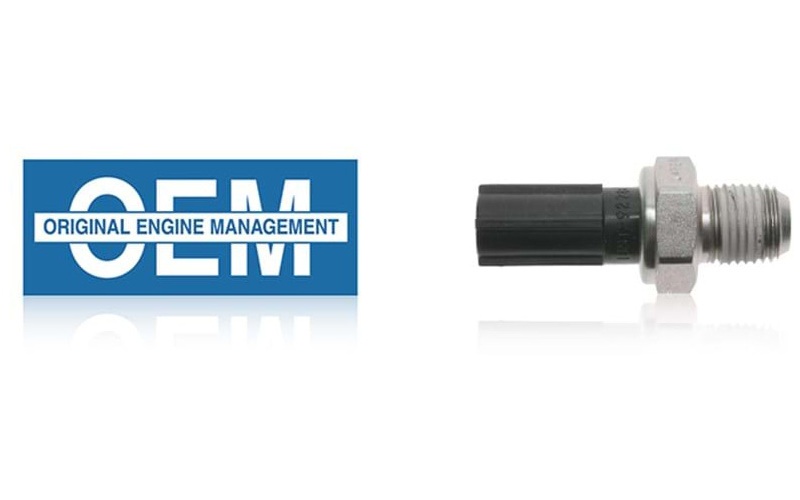2025 Ford F-150 Gasoline Engine Options for Performance
The Ford F-150 continues its legacy as North America’s best-selling pickup truck, offering an impressive array of gasoline engine options to meet diverse driving needs. From worksite capability to everyday commuting and recreational towing, the latest F-150 lineup offers multiple powertrain choices that strike a balance between power, efficiency, and technology. The 2.7L EcoBoost V6 […]
The Ford F-150 continues its legacy as North America’s best-selling pickup truck, offering an impressive array of gasoline engine options to meet diverse driving needs. From worksite capability to everyday commuting and recreational towing, the latest F-150 lineup offers multiple powertrain choices that strike a balance between power, efficiency, and technology.

The 2.7L EcoBoost V6 Engine
The 2.7L EcoBoost V6 serves as the entry-level gasoline engine option for many F-150 trim levels. Despite its relatively compact displacement, this twin-turbocharged powerplant delivers impressive performance that rivals traditional V8 engines.
Technical Specifications
The 2.7L EcoBoost features:
- 2,694 cc displacement
- Twin-turbocharger configuration
- Direct fuel injection with port injection
- Variable valve timing
- Compacted graphite iron block for weight reduction
- Aluminum cylinder heads
- Output: 330 horsepower and 563 N⋅m of torque
This engine utilizes a high-strength compacted graphite iron cylinder block—the same material used in the Ford heavy-duty diesel engines—providing exceptional durability while reducing weight compared to traditional cast iron.
Performance Characteristics
The 2.7L EcoBoost excels at delivering immediate throttle response thanks to its twin-turbocharger design. Peak torque is available from just 1,800 RPM, providing strong low-end and mid-range power that’s particularly valuable for everyday driving and light-to-medium towing duties.
With this engine, the F-150 can tow up to 3,674 kg when properly equipped, making it suitable for hauling boats, medium-sized trailers, and recreational vehicles. The payload capacity reaches approximately 952 kg, accommodating substantial cargo needs.
Fuel Efficiency Focus
The 2.7L EcoBoost incorporates several technologies to maximize fuel efficiency:
- Auto start-stop technology
- Advanced thermal management
- Reduced internal friction
- Optimized turbocharger performance
These features help the engine achieve a combined fuel consumption rating of approximately 11.2 L/100 km in typical driving conditions—impressive efficiency for a full-size pickup with this level of capability.
The 3.5L EcoBoost V6 Engine
For those requiring additional power without stepping up to a V8, the 3.5L EcoBoost V6 offers a compelling blend of high-output performance and reasonable efficiency.
Technical Specifications
The 3.5L EcoBoost includes:
- 3,496 cc displacement
- Dual overhead camshafts
- Twin-turbocharger system with intercooling
- Direct and port fuel injection system
- Forged-steel crankshaft
- Output: 400 horsepower and 678 N⋅m of torque
The latest model year introduces enhanced cooling systems and updated turbocharger designs to this proven powerplant, enabling improved performance under sustained heavy loads.
Towing and Hauling Prowess
The 3.5L EcoBoost shines in demanding work scenarios. When properly equipped, F-150 models with this engine can tow up to 6,350 kg—a figure that rivals many diesel-powered competitors. The maximum payload capacity reaches approximately 1,406 kilograms, supporting substantial work requirements.
This capability comes from the engine’s flat torque curve, with peak torque available from 1,600 RPM through 4,500 RPM, providing sustained pulling power throughout the most commonly used portion of the engine’s operating range.
Advanced Efficiency Technologies
Despite its focus on performance, the 3.5L EcoBoost incorporates several efficiency features:
- Twin independent variable camshaft timing
- Lightweight aluminum architecture
- Precision electronically-controlled wastegates
- Active grille shutters for improved aerodynamics
These technologies help the engine achieve approximately 12.4 L/100 km in combined driving conditions—a reasonable figure given its substantial performance capabilities.
The 5.0L Ti-VCT V8 Engine
For traditionalists who prefer the distinctive sound and power delivery of a V8 engine, the F-150 continues to offer the 5.0L Ti-VCT V8 as a proven option.
Technical Specifications
The 5.0L V8 features:
- 5,038 cc displacement
- Naturally aspirated design
- Dual overhead camshafts
- Ti-VCT (Twin independent Variable Camshaft Timing)
- Cast aluminum block and cylinder heads
- Spray-bore cylinder liners
- Output: 395 horsepower and 556 N⋅m of torque
Ford has enhanced this engine with updated intake and exhaust systems, optimizing airflow for improved efficiency and power delivery.
Performance Attributes
The V8 offers linear, predictable power delivery, which many drivers prefer for towing and hauling. It provides excellent throttle response without the complexity of turbocharging and produces the distinctive V8 exhaust note that remains popular among truck enthusiasts.
When properly equipped, the 5.0L V8-powered F-150 can tow up to 13,000 pounds and haul payloads of approximately 3,300 pounds, making it well-suited for demanding work applications.
Durability Focus
The 5.0L V8 has a focus on long-term durability:
- Forged-steel crankshaft and connecting rods
- Robust cast aluminum cylinder heads
- High-flow cooling system
- Large capacity oil system
These features make the V8 particularly well-suited for applications that require sustained performance under heavy loads, such as frequent towing or hauling in challenging conditions and extreme temperatures.
The 3.5L PowerBoost Full Hybrid V6
The most technologically advanced gasoline engine option in the F-150 lineup is the 3.5L PowerBoost Full Hybrid V6, combining the proven 3.5L EcoBoost with a sophisticated electric motor system.
Hybrid System Architecture
The PowerBoost system includes:
- 3.5L EcoBoost V6 base engine
- 35 kW electric motor integrated with the transmission
- 1.5 kWh lithium-ion battery pack
- Power electronics controller
- Combined output: 430 horsepower and 773 N⋅m of torque
The electric motor is positioned between the engine and transmission, allowing it to provide additional torque when needed or take over entirely for short periods of pure electric driving at low speeds.
Performance and Capability
Despite its focus on efficiency, the PowerBoost system delivers the highest torque figure in the F-150 lineup, making it exceptionally capable for towing and hauling. When properly equipped, PowerBoost F-150 models can tow up to 5,760 kg and carry payloads of approximately 1,016 kg.
The immediate torque delivery from the electric motor enhances the engine’s responsiveness, particularly during initial acceleration and when passing at highway speeds.
Fuel Efficiency Leadership
The PowerBoost system achieves approximately 9.8 L/100 km in combined driving conditions—a significant improvement over non-hybrid options with similar capability. The system can operate in electric-only mode at speeds up to approximately 35 km/h under light loads, further enhancing efficiency in urban driving scenarios.
The regenerative braking system captures energy during deceleration and braking, storing it in the battery for later use and reducing wear on the traditional friction brakes.
The High-Output 3.5L EcoBoost V6
Reserved for the performance-oriented F-150 Tremor and Raptor models, the high-output version of the 3.5L EcoBoost V6 delivers exceptional power for off-road adventures and high-performance driving.
Enhanced Performance Specifications
The high-output 3.5L EcoBoost features:
- 3,496 cc displacement
- Higher-boost turbochargers
- Enhanced cooling systems
- Revised intake and exhaust systems
- Output: 450 horsepower and 691 N⋅m of torque (Tremor)
- Output: 500 horsepower and 745 N⋅m of torque (Raptor)
The Raptor variant of this engine includes additional modifications to the cooling system, turbochargers, and engine management software to extract maximum performance.
Performance Focus
This engine variant prioritizes high-speed performance and off-road capability over maximum towing capacity. It delivers exceptional acceleration, with the Raptor capable of 0-100 km/h times under 5.5 seconds despite the vehicle’s substantial weight.
The broad power band and rapid turbocharger response make this engine ideal for off-road driving, where immediate power delivery is crucial for navigating challenging terrain.
Specialized Engineering
The high-output EcoBoost includes several specialized components:
- High-flow dual exhaust system
- Enhanced intercooling system
- Oil coolers for the engine and transmission
- High-capacity air filtration for dusty conditions
These enhancements ensure the engine can deliver sustained performance in the demanding conditions encountered during off-road driving and performance-oriented use.
Five Facts About the 2025 Ford F-150 Gas Engines
- The 2.7L EcoBoost V6 utilizes compacted graphite iron for its block—the same material used in Ford Super Duty diesel engines and high-performance race car engines—which is 75% stronger and 20% lighter than traditional cast iron.
- When the 3.5L PowerBoost hybrid system operates in electric mode, it’s so quiet that Ford engineers added subtle artificial engine sounds at low speeds to alert pedestrians to the vehicle’s presence.
- The 5.0L V8 engine block has “Coyote” cast into a hidden portion of the block—a nod to its internal development name and a detail most owners will never see unless the engine is removed.
- Engineers testing the high-output 3.5L EcoBoost for the Raptor logged over 1,600 hours of dynamometer testing at maximum power output—equivalent to driving at full throttle from Toronto to Vancouver more than 30 times.
- The 3.5L EcoBoost engine contains over 22 meters of various fluid lines and hoses to manage oil, coolant, transmission fluid, and intercooler systems throughout the engine bay.
Questions and Answers About the 2025 Ford F-150 Gas Engines
Which F-150 engine option is best for everyday driving with occasional towing?
- The 2.7L EcoBoost V6 offers the best balance for this use case. It provides sufficient power for daily driving with excellent fuel efficiency, while still offering a 3,674 kg towing capacity that handles most recreational trailers, boats, and campers. Its lower weight compared to larger engine options also contributes to better handling and braking in everyday driving situations.
How does the PowerBoost hybrid system work during towing?
- When towing, this system primarily uses the 3.5L EcoBoost engine for sustained power, while the electric motor provides supplemental torque during acceleration and hill climbing. The system’s 773 N⋅m of combined torque helps get heavy loads moving from a standstill with less strain on the engine. During downhill sections, the regenerative braking system can help control speed while simultaneously recharging the battery. The hybrid system’s computer continuously optimizes the power split between gasoline and electric propulsion based on load conditions, terrain, and battery state of charge.
What maintenance differences exist between the various F-150 engine options?
- The EcoBoost engines (2.7L, 3.5L, and high-output variants) require synthetic oil and have slightly shorter recommended oil change intervals than the 5.0L V8 when used for heavy towing or in severe conditions. The PowerBoost hybrid adds maintenance items related to the electric drive system, though the high-voltage battery is warranted separately and designed to last the vehicle’s lifetime. The 5.0L V8 tends to be the simplest to maintain with fewer specialized components. All engines use a timing chain rather than a belt, eliminating the need for periodic replacement, and all feature 100,000 km spark plug replacement intervals under normal driving conditions.
Is the 5.0L V8 more reliable than the turbocharged EcoBoost engines?
- Reliability data shows that both the 5.0L V8 and the EcoBoost engines demonstrate excellent longevity when properly maintained. The 5.0L V8 has fewer components that could potentially fail, as it lacks turbochargers and their associated plumbing. However, the EcoBoost engines have proven remarkably durable despite their higher complexity, with many examples now exceeding 300,000 km without major issues. Ford has continuously refined the EcoBoost design since its introduction, addressing early concerns about carbon buildup and improving the cooling system. For the most demanding applications with constant heavy loads, the V8’s simpler design may offer a slight advantage in long-term durability.
How much fuel can you save with the PowerBoost hybrid compared to other engine options?
- The PowerBoost hybrid typically delivers 20-25% better fuel economy compared to the 5.0L V8 and approximately 15-20% better than the non-hybrid 3.5L EcoBoost in mixed driving conditions. This translates to approximately a 2.5-3.0 L/100 km improvement over the V8 and a 1.8-2.3 L/100 km improvement over the standard 3.5L EcoBoost. The efficiency advantage is most pronounced in city driving with frequent stops, where the hybrid system can recover energy through regenerative braking and utilize electric-only operation at low speeds. Highway efficiency improvements are more modest, typically 10-15% better than comparable non-hybrid engines at steady cruising speeds.
Can the high-output 3.5L EcoBoost in the Raptor run on regular fuel?
- While it can technically operate on regular 87-octane fuel, Ford specifically recommends premium 91-octane or higher for optimal performance. When running on regular fuel, the engine management system detects the lower octane rating and adjusts the timing and boost pressure to prevent detonation, resulting in a reduced power output of approximately 15-20% less than the rated 500 horsepower. For casual driving, regular fuel won’t damage the engine. However, for high-performance or off-road driving, premium fuel is recommended to unlock the engine’s full capability and avoid potential drivability issues under heavy load.
How does Ford prevent carbon buildup on intake valves in the direct injection EcoBoost engines?
- Early generations of direct injection engines from various manufacturers experienced issues with carbon buildup on intake valves since fuel was injected directly into the combustion chamber rather than flowing over the valves as in port injection. Ford addressed this issue in its current EcoBoost engines by implementing a dual-fuel injection system that combines direct injection with traditional port injection. The port injectors operate primarily during cold starts and low-load conditions, spraying fuel into the intake ports where it flows over the valves, helping to keep them clean. This dual-injection strategy offers the efficiency benefits of direct injection while mitigating carbon accumulation issues, thereby significantly extending the service life of the intake system.



